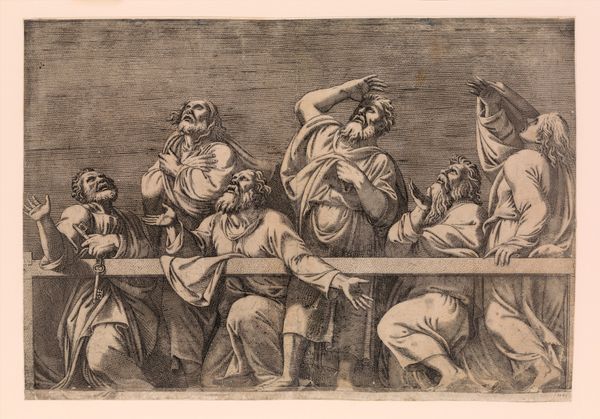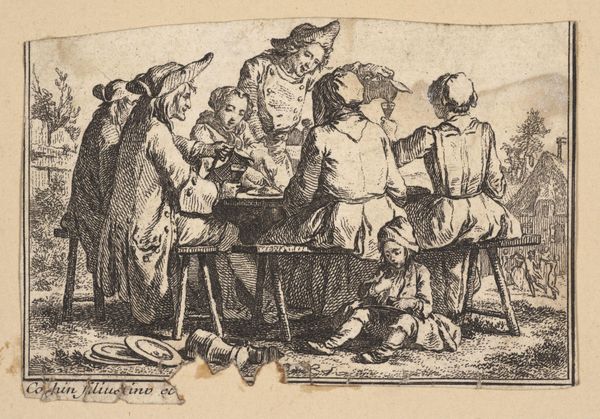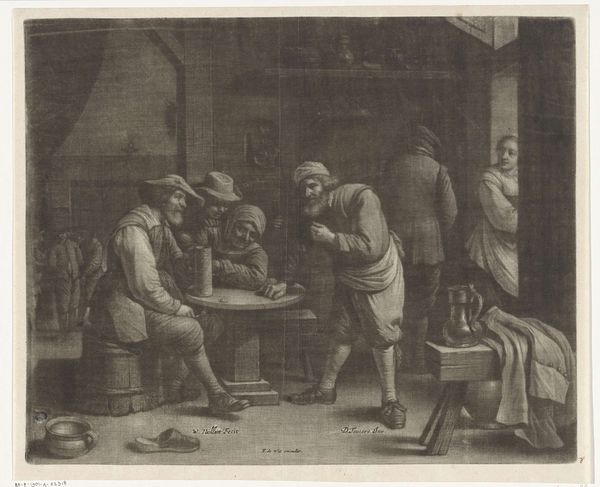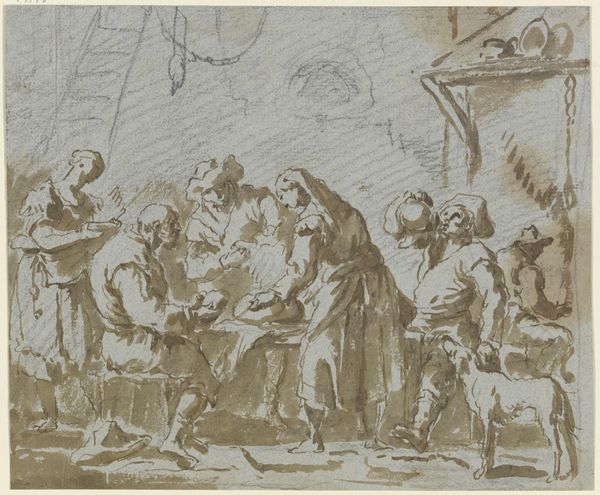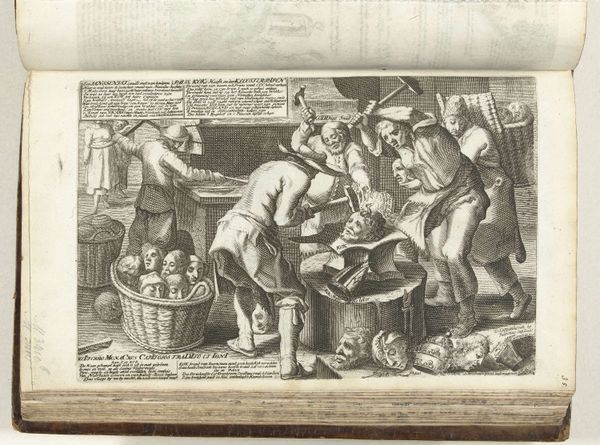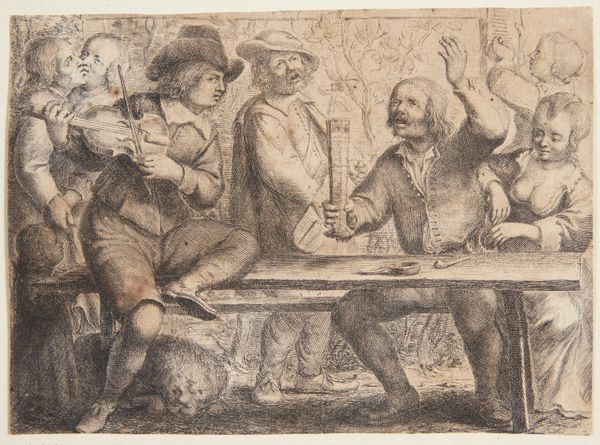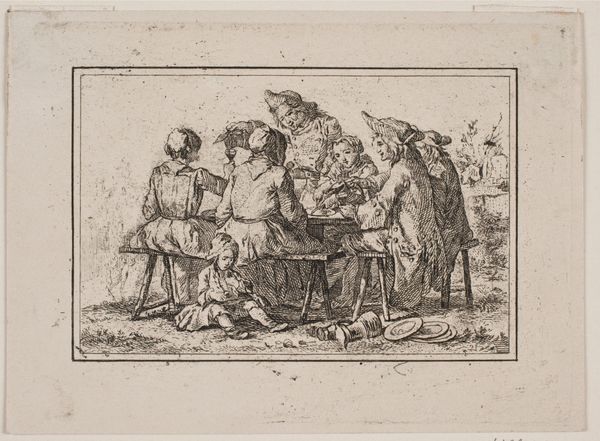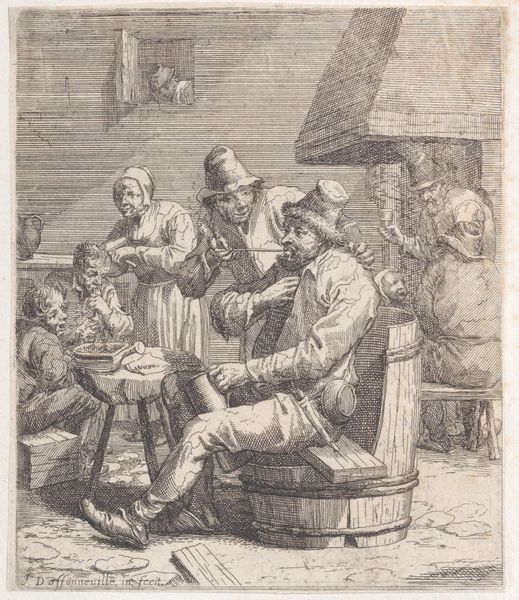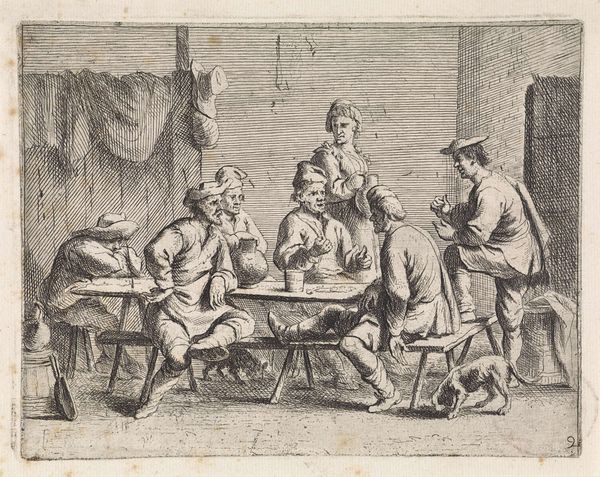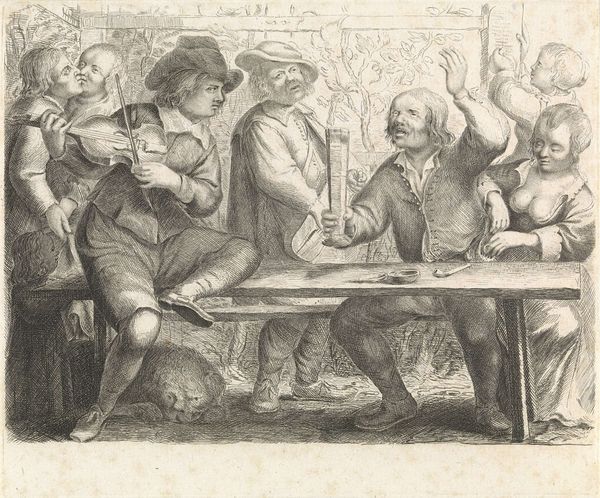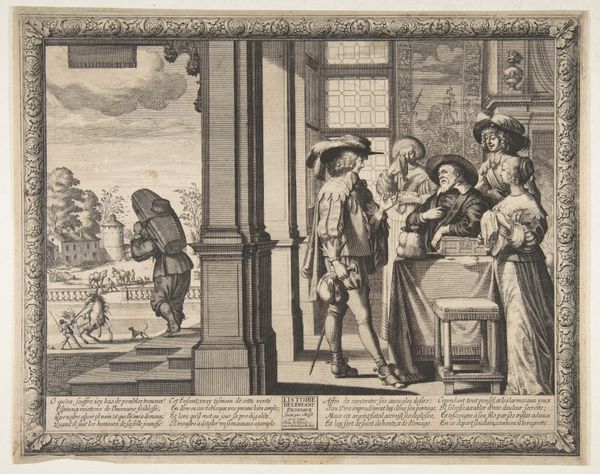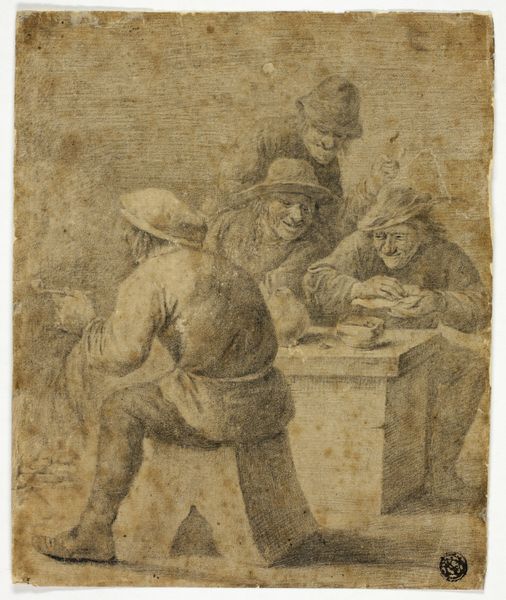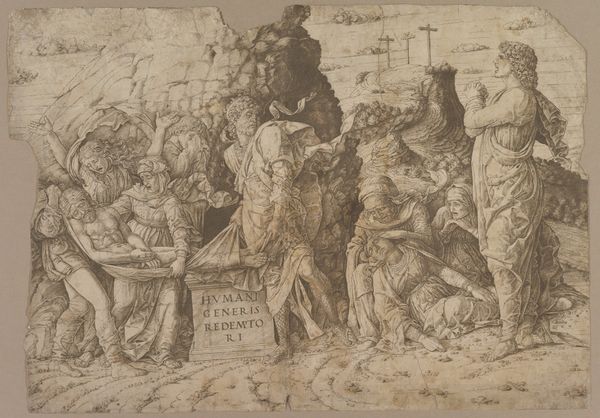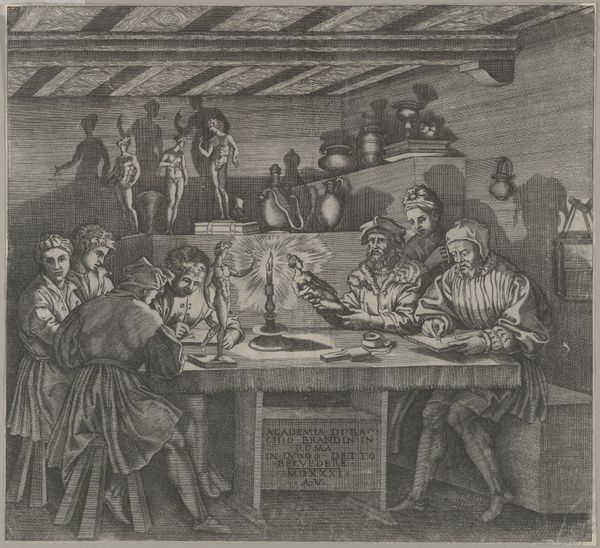
drawing, print, paper, ink, pen
#
portrait
#
drawing
#
narrative-art
#
baroque
# print
#
figuration
#
paper
#
ink
#
pencil drawing
#
france
#
line
#
pen
#
genre-painting
Dimensions: 157 × 216 mm
Copyright: Public Domain
Editor: Here we have Jean Le Pautre’s "Tavern Scene with Carousing Men," rendered with pen, ink, and grey wash on paper. It feels very... chaotic. What’s your take? Curator: Chaos is a good word for it! But let's not simply see chaos, but rather what that chaos *represents*. Tavern scenes were incredibly popular, and often used to depict the lives of ordinary people, but beyond that they also held the potential to reflect broader social and political issues. What societal concerns might such a boisterous tavern scene reflect, considering the historical context? Editor: Maybe anxieties about social order? Like, fear of the working class losing control? Curator: Precisely. The focus on drinking, gambling, and rowdiness could be read as a commentary on social decadence, poverty, or even resistance against oppressive systems. Remember that during the Baroque era, anxieties around class and authority were extremely potent, influencing artistic production in many different ways. Editor: I hadn't thought about it as a form of resistance. So, are you saying it's more than just a snapshot of daily life? Curator: Exactly! Le Pautre uses the tavern as a stage to address power dynamics and class tensions in 17th-century France. Think about who *isn’t* represented. Where are the noble patrons? The servers, maybe women? Their absence speaks volumes. It highlights a singular perspective, which serves to implicitly examine how social hierarchy worked. Does that nuance change your initial read of “chaos”? Editor: Absolutely. It makes me consider whose stories are being told, and whose are being left out of the frame. Curator: And understanding those omissions is essential to interpreting the work’s social commentary and artistic merit. Thanks to our conversation, it offers not only chaotic spectacle but pointed social critique.
Comments
No comments
Be the first to comment and join the conversation on the ultimate creative platform.
